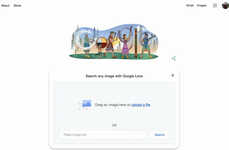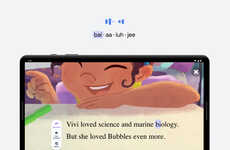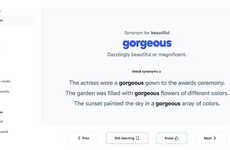
The 1,240-page Google Dictionary is Technologically Savvy
Vivian Lau — July 15, 2012 — Pop Culture
References: bewe.me & technolog.msnbc.msn
The Google dictionary capitalizes on the old adage: a picture is worth a thousand words.
Created by London Designers Ben West and Felix Heyes, this photo-heavy dictionary offers the first Google image as the ‘definition’ of a word. The traditional 21,000 words featured in this resource book do not have usage examples, synonyms, antonyms or tools to help you pronounce, but rather, are represented by high-gloss pictures sourced from the Internet.
As people spend more time on the web, the way in which information is synthesized evolves, so a dictionary like this is revolutionary. With infographics and the ‘meme’ phenomenon as Internet staples, it is about time that other academic resources catch up.
Created by London Designers Ben West and Felix Heyes, this photo-heavy dictionary offers the first Google image as the ‘definition’ of a word. The traditional 21,000 words featured in this resource book do not have usage examples, synonyms, antonyms or tools to help you pronounce, but rather, are represented by high-gloss pictures sourced from the Internet.
As people spend more time on the web, the way in which information is synthesized evolves, so a dictionary like this is revolutionary. With infographics and the ‘meme’ phenomenon as Internet staples, it is about time that other academic resources catch up.
Trend Themes
1. Photo-driven Dictionaries - The use of images instead of text in dictionaries disrupts traditional definitions and opens up opportunities for more visual and immersive learning experiences.
2. Internet-inspired Learning - The integration of internet culture and resources into educational materials revolutionizes traditional learning methods and appeals to a digitally-savvy generation.
3. Visual Synthesis of Information - The use of high-gloss pictures sourced from the internet as representations of words in dictionaries reflects the growing trend of visual communication and provides a more engaging way to learn vocabulary.
Industry Implications
1. Educational Publishing - The use of photo-driven dictionaries presents an opportunity for educational publishers to create more interactive and visually appealing learning materials.
2. Digital Education - The integration of internet-inspired learning in educational resources opens up opportunities for digital education platforms to create innovative and engaging learning experiences.
3. Design and Advertising - The visual synthesis of information in dictionaries reflects the importance of visual communication, presenting opportunities for design and advertising professionals to create visually impactful content in various industries.
4.8
Score
Popularity
Activity
Freshness























